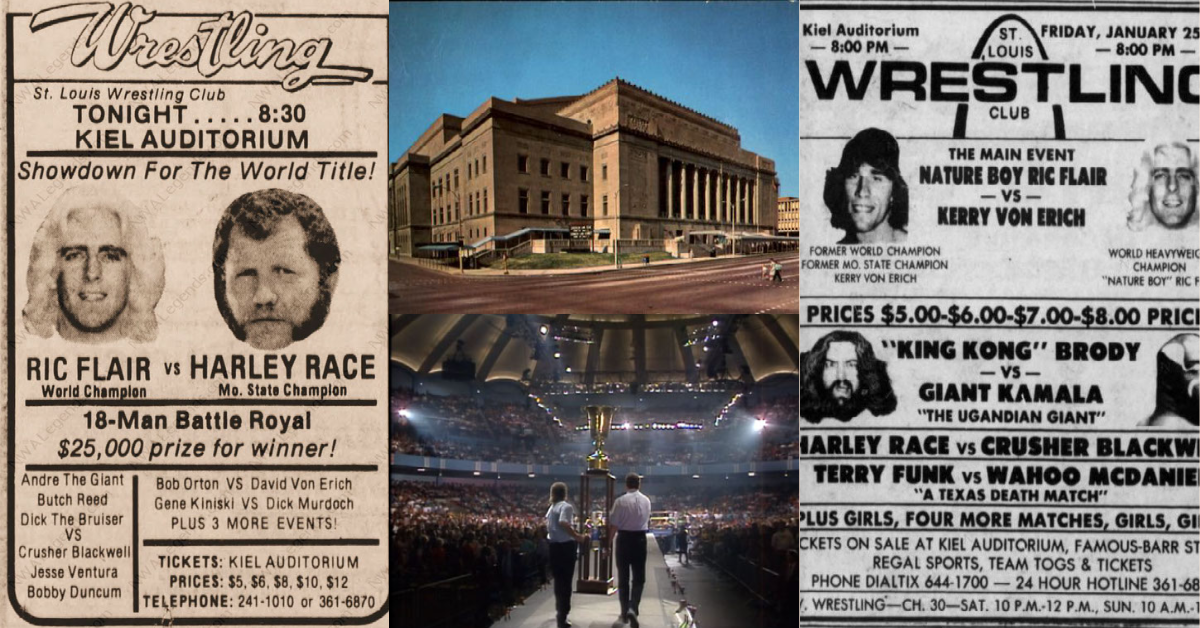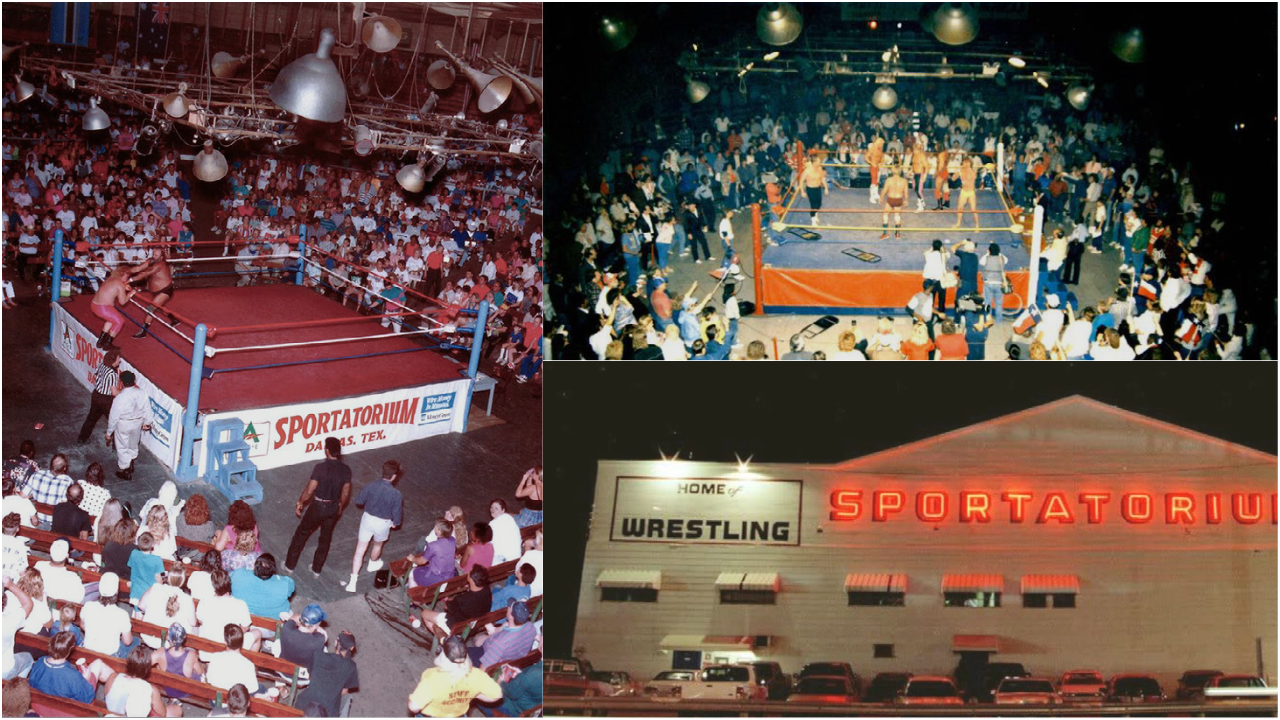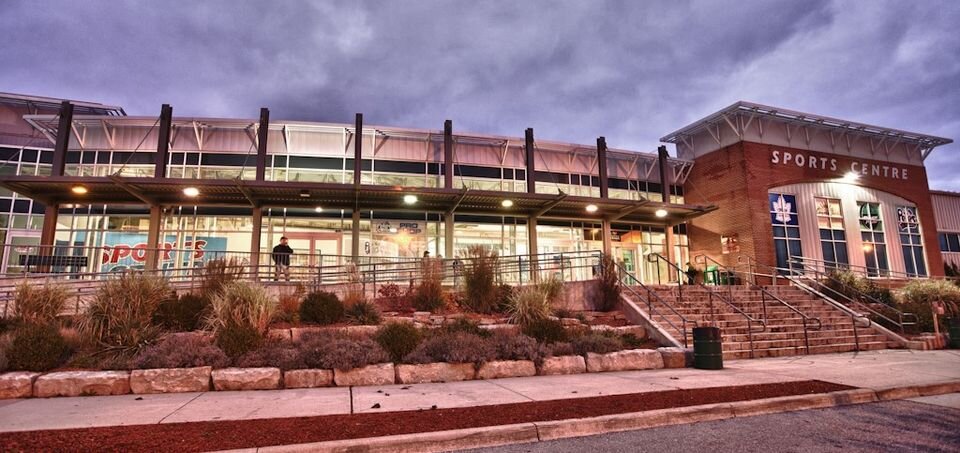Sacred Grounds - Maple Leaf Gardens
Throughout the course of professional wrestling history, there have been events at every type of venue one could imagine. From giant football stadiums all the way down to your local flea market. There have been scores of locales that have seen repeated shows, and then there are those places that become intertwined with certain promotions or certain wrestlers. These are the Sacred Grounds.
As promised in our previous Sacred Grounds looking at Stampede Corral, the time has come to take a visit to another Canadian hotbed of professional wrestling, this time on the other side of the country, and also one near and dear to our hearts here at The Signature Spot, as Maple Leaf Gardens is essentially the home territory of the Spot’s base. In fact, the founder of the site Chris has commented before on his own experience at Maple Leaf Gardens, which we will share at the end of the article.
Maple Leaf Gardens was initially designed and constructed to be the new home arena of the Toronto Maple Leafs hockey team and would be built remarkably fast and cheap given the circumstances, with the ground initially being broken in May of 1931 with the official opening of the arena happening on November 12th, 1931. Though designed with hockey in mind, it was clear with a building of this stature that the arena would be used to host many other types of events, which it would go on to over the years. Besides the Maple Leafs and their various minor-league teams using the arena over the years, basketball was also a frequent event seen at the building, as well as musical concerts with everyone from The Who and Bob Dylan all the way to The Jacksons and even the King himself, Elvis Presley in his first non-US appearance. To say the Gardens was an important building in all aspects of entertainment would be an understatement. But we aren’t here to discuss all of that, we’re here for the wrestling history.
One week after the official opening, the first wrestling event would be held at Maple Leaf Gardens, bringing in a crowd of 16,000 people to see the legendary Jim Londos successfully defend the World Championship against Gino Garibaldi in the main event. Drawing such a large crowd was a great sign for the future of wrestling not only the building but the area as a whole. While Jack Corcoran was the man who promoted the show, less than a decade later he would sell the Maple Leaf Wrestling promotion to Frank Tunney, a man who would become synonymous with wrestling in Ontario for the next 50 years. Think of him as an East Coast version of Stu Hart, without the actual training of wrestlers.
Perhaps the man who became most synonymous with Tunney’s promotion would be Whipper Billy Watson, who under the promotional wing of Tunney, would go on to become a legitimate legend of the sport, with the two men helping put Toronto on the map as one of the most important wrestling cities in North America. The sheer amount of talent that would make their mark in Maple Leaf Gardens would be impossible to accurately put into words here, but I will try my best. Some of the more familiar names to any fan of wrestling history that passed through include The Sheik, who owned and operated his own territory based out of the nearby Detroit area, and would actually go onto help book the Toronto territory alongside George Scott throughout the 1970s. Elite World Champions and other such as Bruno Sammartino, Buddy Rogers, Andre The Giant, Ric Flair, Harley Race, Ricky ‘The Dragon’ Steamboat, Tiger Jeet Singh (yes, the father of the ill-fated Tiger Ali Singh), Haystacks Calhoun, Bobo Brazil and so many others used Maple Leaf Gardens and the Toronto territory as somewhat of a proving ground to help establish that they were the best of the best.
Due to Tunney’s friendly relationship with different promoters across the United States, Maple Leaf Gardens would see partnerships and Championship defenses from different territories, giving it somewhat of an All-Star feel at times. I can’t think of many arenas throughout the world that has at one point seen the World Champions from the AWA, the WWWF (and later the WWF), the NWA (both the Canadian portion of the company, as well as the historic Mid-Atlantic territory) defend their titles in exciting bouts for the Toronto faithful.
There are perhaps two great examples of this, with the first taking place on February 16th, 1977, The NWA World Champion Terry Funk would defend his championship against Harley Race in a match that would actually see Harley Race make Funk submit to his Indian Death Lock to win his second NWA World Championship. This was of course a time when the title very rarely swapped hands, making it also the only time to my knowledge that the NWA Championship changed hands on Canadian soil, and is widely regarded as a historic title change.
The other highly regarded moment occurred a few years later on March 25th, 1979. Tunney arranged and promoted a Title vs. Title match featuring WWF Champion Bob Backlund against the AWA Champion Nick Bockwinkel, resulting in a classic between two of the best wrestlers to ever step foot in a wrestling ring. Of course, there would be no definitive winner and the match ended in a count-out. While in our current wrestling scene the fabled ‘Forbidden Door’ has been opened, the modern-day equivalent of this would be WWE Universal Champion Roman Reigns against AEW World Champion Hangman Adam Page. It was a special night, and the hardcore Toronto fans knew it.
Unfortunately in 1983, Frank Tunney would pass away, and the Toronto office and the promoting of wrestling in Maple Leaf Gardens would pass onto his nephew, Jack Tunney. Any fan of wrestling from the late 80s through the early 90s will fondly remember Jack Tunney as the on-screen President of the World Wrestling Federation, a role he took on after partnering with Vince McMahon in 1984, ending the run of different promotions, specifically the NWA, running the Toronto mainstay. At this point, Maple Leaf Wrestling as a territory itself ceased as it was absorbed the WWF, but that didn’t mean wrestling was done in the city. As part of the deal, the WWF would run shows monthly in Toronto and slowly began taking over all of Canada as part of Vince McMahon’s expansion and buying up every territory he could get his hands on.
Following the McMahon buyout of the Toronto, the World Wrestling Federation would be the only promotion to run the Maple Leaf Gardens, on a monthly basis as per the deal with Tunney. Before it fully took effect, Jim Crockett Promotions would make one last jab at the Toronto area, running their final show there on June 24th, 1984, The show featured mostly under-card talent and was clearly the B-team squad, as the main event match was a 6-man tag team match that saw Buzz Sawyer, Jimmy Valiant and the just recently departed Angelo Mosca (who did have a big following throughout Canada) defeating Kamala, The Assassin and Paul Jones in just under 12 minutes. Not exactly a card that would set the world on fire, especially seeing as the next WWF show was headlined by a near 30-minute Intercontinental Title match between Tito Santana and Mr. Wonderful Paul Orndorff.
Over the next few years, WWF would continue to be the only wrestling at Maple Leaf Gardens, running on the agreed monthly basis. While not all shows have a reported crowd attendance, ones that are, generally see crowds between 5,000 to 15,000, all for shows that would usually feature a main event between either two upper card talents or Intercontinental and Tag Team Championship matches. On the rare occasion that Hulk Hogan would come to town, the crowd attendance would usually bolster up to 17,000 or more. A good example would be on July 14th, 1985 which saw a show featuring Terry Funk and Randy Savage on the undercard, before what was surely a tag team classic between The Hart Foundation and The British Bulldogs going on just before Hulk Hogan would defend the WWF Championship successfully against Big John Studd.
Hart Foundation vs. Rougeau Brothers December 1986. Credit: Scott Simpson
As time went on the business began to dip, so did the crowd sizes in the Gardens, with the exception of special shows, such as the Frank Tunney Sr. Memorial Tournament, which took place just a few weeks ahead of the monstrous WrestleMania III on March 15th, 1987. 18,000 fans gathered to see the Killer Bees team of B. Brian Blair and Jim Brunzell outlast the competition and be rewarded with an immediate WWF Tag Team Championship match with the Hart Foundation that would see them fall just short.
The dwindling crowds would ever reach those heights again, with only two more shows at the venue reported having more than 10,000 fans, the first being a show taking place just over a month prior to Toronto’s own WrestleMania VI, a show that Tunney and the Toronto office helped book at the SkyDome (now the Rogers Center). Later that year would be the other, both headlined by Hulk Hogan and not The Ultimate Warrior. After the latter show, WWF began scaling back the frequency in which they visited Toronto and the Maple Leaf Gardens, only running quarterly instead of monthly.
The final WWF show, and wrestling show overall, took place on September 17th, 1995, headlined by a WWF Championship defense from Diesel, fending off the advances of the ahead of his time Waylon Mercy. An inauspicious way to go out given the history of the building, but the show also featured an Intercontinental Championship defense pitting Shawn Michaels against Sycho Sid, as well as a Casket Match between The Undertaker and Kama.
Unlike many of the buildings covered in our Sacred Grounds series, Maple Leaf Gardens is still standing to this day. In 1991, the province of Ontario designated the venue under the Ontario Heritage Act, and in 2007 it was listed as a National Historic Site of Canada, preventing the building from ever being moved or torn down. The building has essentially been split into two levels as of today, with the upper level being used as an arena for Ryerson University, while the lower levels offer a retail environment presented by Loblaws (a large Canadian grocery chain.)
Whether or not we are to ever see wrestling in the building again, Maple Leaf Gardens stands as a hugely historic building in the history of professional wrestling. While maybe not as fondly regarded as a Madison Square Garden or Rosemont Horizon, Maple Leaf Gardens began as our own Canadian version of those historic sites, and certainly for a time lived up to that honor.
As mentioned, our own Chris Toplack had his own experience at the Gardens and recounted that on The Signature Spot Facebook page, which can be viewed below, and if you are interested in more information about Canadian wrestling history, be sure to visit Maple Leaf Wrestling.




